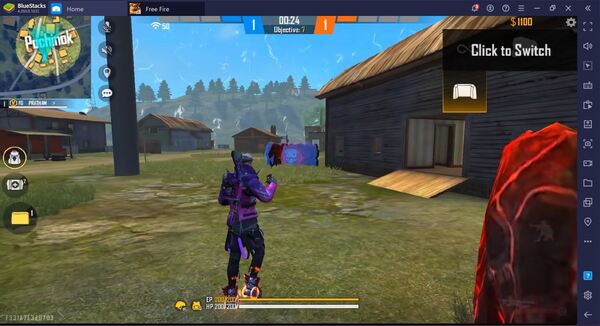Schedule 1 Drugs: Understanding the Most Restricted Category of Controlled Substances
Schedule 1 is a classification under the United States Controlled Substances Act (CSA), used to categorize substances deemed to have a high potential for abuse and no accepted medical use. It’s a legal designation that carries powerful consequences for research, medicine, and public policy. Despite growing controversy, many widely known substances—like cannabis and MDMA—remain in this most restricted tier.
In this comprehensive guide, we’ll unpack the origins, definitions, implications, controversies, and future outlook of Schedule 1 classification. Whether you're a student, healthcare professional, policymaker, or concerned citizen, understanding Schedule 1 is vital to grasping the larger conversation around drug reform and regulation.
The Origins of Schedule 1 Classification
The Controlled Substances Act of 1970
In 1970, the U.S. Congress passed the Controlled Substances Act (CSA) as part of President Richard Nixon’s “War on Drugs.” The Act categorized drugs into five schedules based on:
-
Potential for abuse
-
Medical use in treatment
-
Risk to public health
Schedule 1 was defined as the most dangerous and restricted level, banning not just recreational use but also most research and medical access.
What Led to the Schedule System?
Prior to the CSA, drug regulation in the U.S. was fragmented and inconsistent. The rise of recreational drug use in the 1960s and increasing concerns about addiction led lawmakers to centralize drug control under a single federal law.
Legal Definition and Criteria of Schedule 1
Three Key Criteria
Under federal law, a drug is placed in Schedule 1 if it meets the following:
-
High potential for abuse
-
No currently accepted medical use in treatment in the U.S.
-
Lack of accepted safety for use under medical supervision
Implications of These Criteria
This classification is not just symbolic—it has legal and practical consequences. It prevents physicians from prescribing Schedule 1 drugs and creates massive barriers to conducting scientific or medical research.
Notable Substances Classified as Schedule 1
Examples of Schedule 1 Drugs
Some of the most well-known Schedule 1 substances include:
-
Cannabis (marijuana)
-
LSD (lysergic acid diethylamide)
-
Heroin
-
MDMA (ecstasy)
-
Psilocybin (magic mushrooms)
-
Bath salts (synthetic cathinones)
Controversy Surrounding Cannabis
Despite being legal for recreational or medical use in over 30 U.S. states, cannabis remains federally classified as a Schedule 1 drug, sparking heated debate about the relevance and fairness of the system.
Scientific Research Barriers
Schedule 1 vs. Schedule 2 and Beyond
Schedule 2 substances (like cocaine and methamphetamine) are also dangerous but legally recognized for limited medical use. Paradoxically, they are easier to study and prescribe than Schedule 1 drugs.
Research Restrictions
To study a Schedule 1 substance, researchers must:
-
Apply for DEA approval
-
Obtain special licenses and secure facilities
-
Get Institutional Review Board (IRB) clearance
-
Follow tight storage and transport regulations
This red tape makes it time-consuming and costly to perform meaningful research, even for promising therapeutic applications.
Medical Uses and the Push for Reclassification
Emerging Therapies from Schedule 1 Substances
Recent studies have shown that some Schedule 1 substances have promising medical potential, especially in mental health:
-
Psilocybin for depression and PTSD
-
MDMA for trauma therapy
-
Cannabis for chronic pain, epilepsy, and anxiety
DEA vs. Medical Science
Despite these findings, the DEA maintains that there’s not enough evidence to reclassify these drugs—partly because Schedule 1 restrictions make generating that evidence nearly impossible. It’s a catch-22 that many experts criticize.
The Legal Consequences of Schedule 1 Classification
Criminal Penalties
Possessing, distributing, or manufacturing Schedule 1 substances carries severe penalties under federal law:
-
First-time possession: up to 1 year in prison and a $1,000 fine
-
Distribution: 5 to 40 years depending on quantity
-
Repeat offenses: much harsher penalties
Impact on Minorities and Communities
Schedule 1 classification has disproportionately affected marginalized communities, particularly Black and Latino individuals. Arrests and incarcerations for marijuana offenses have historically been far more common among these groups.
International Schedule 1 Equivalents
UN Drug Control Conventions
Globally, Schedule 1 substances are governed by the United Nations Single Convention on Narcotic Drugs (1961) and related treaties. These conventions mirror the U.S. in classifying certain substances as having no medical use and high abuse potential.
Variation Among Countries
Some countries, like Canada, Portugal, and the Netherlands, take a more progressive approach. They allow regulated use or medical access to substances that remain Schedule 1 in the U.S., highlighting international differences in drug policy.
The Ongoing Debate and Political Implications
Advocates for Rescheduling
Organizations pushing for reform include:
-
Multidisciplinary Association for Psychedelic Studies (MAPS)
-
Drug Policy Alliance
-
American Civil Liberties Union (ACLU)
These groups argue that the Schedule 1 label is outdated and prevents innovation and healing.
Opposition and Concerns
Opponents, including some law enforcement and addiction specialists, warn of:
-
Increased risk of abuse if restrictions are loosened
-
Unforeseen long-term effects
-
Challenges in regulation and control
Pros and Cons of the Schedule 1 System
Pros
✅ Strict Control of Dangerous Substances
Prevents public access to drugs with high potential for harm.
✅ Legal Framework for Enforcement
Helps regulate and combat drug trafficking and illegal production.
✅ International Alignment
Keeps U.S. policy aligned with global treaties on drug control.
Cons
❌ Hinders Scientific Research
Nearly impossible to study promising substances due to bureaucratic hurdles.
❌ Lacks Medical Nuance
Fails to recognize emerging medical uses and growing scientific evidence.
❌ Criminalizes Patients and Providers
People with legitimate medical needs are often caught in legal limbo.
The Future of Schedule 1: Reform or Reinforcement?
Cannabis Reclassification
In recent years, bills like the MORE Act and SAFE Banking Act have pushed Congress to declassify cannabis or move it to a less restrictive schedule. The Biden administration has also signaled interest in reevaluating cannabis classification.
Psychedelic Renaissance
Therapeutic interest in psychedelics has reached a tipping point. Clinical trials, especially involving psilocybin and MDMA, may force the DEA’s hand in reconsidering their Schedule 1 status in the coming years.
Final Verdict: Is the Schedule 1 System Still Valid?
The Schedule 1 classification system, while originally designed to protect public health, now faces increasing scrutiny. It may have helped create a legal framework for drug control, but its rigidity, research barriers, and social consequences have made it controversial.
In the 21st century, science and public opinion are challenging the system’s assumptions. Reforms seem not only possible but necessary for a more evidence-based and compassionate approach to drug regulation.
Expert Rating: 7.5 / 10
| Category | Score (out of 10) |
|---|---|
| Legal Structure | 9 |
| Scientific Accuracy | 5 |
| Medical Utility | 4 |
| Social Justice Impact | 3 |
| Enforcement Effectiveness | 8 |
| International Relevance | 7 |
Conclusion: Time for a Rethink?
Whether viewed as a necessary safeguard or an outdated relic, Schedule 1 continues to shape drug policy, research, and individual lives. As science reveals new possibilities and public opinion evolves, the legal system must also adapt.
If we want policies grounded in truth, compassion, and efficacy, then rethinking Schedule 1 is no longer a fringe idea—it’s a public necessity.



























